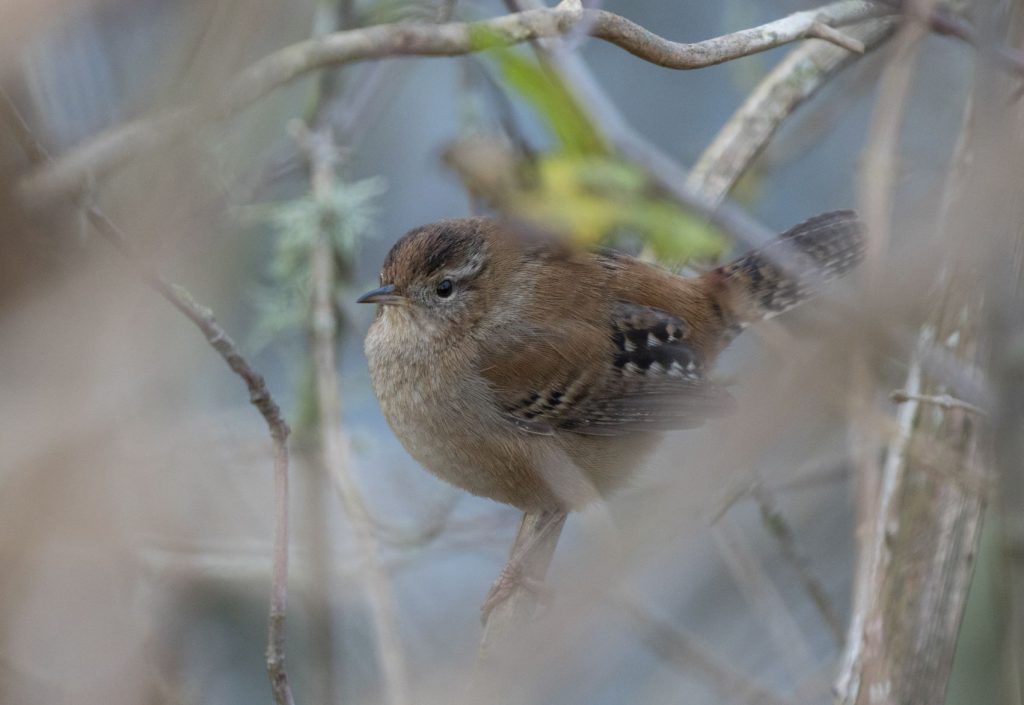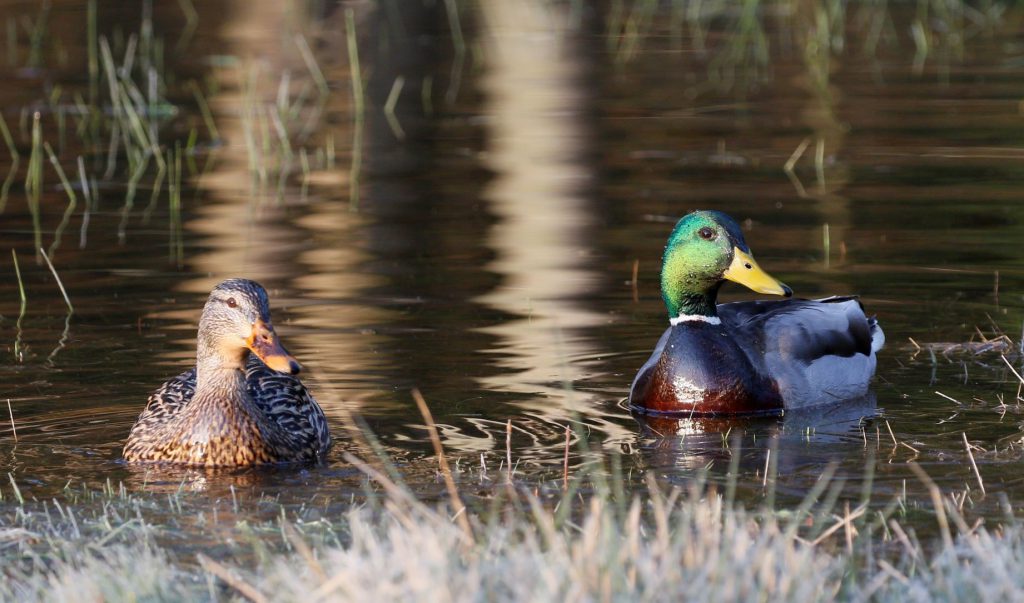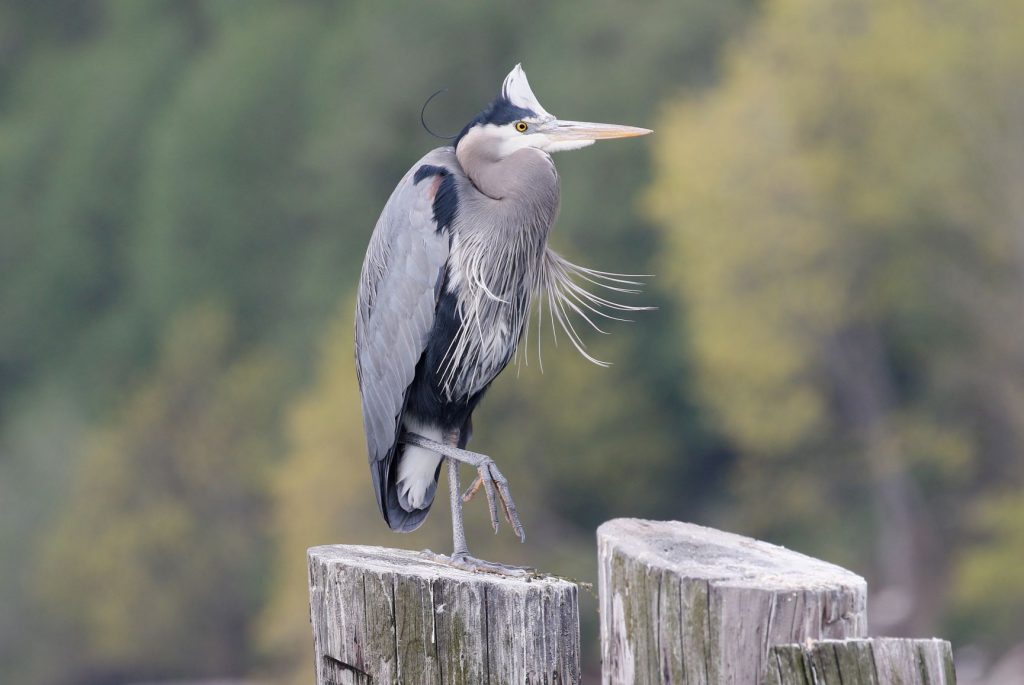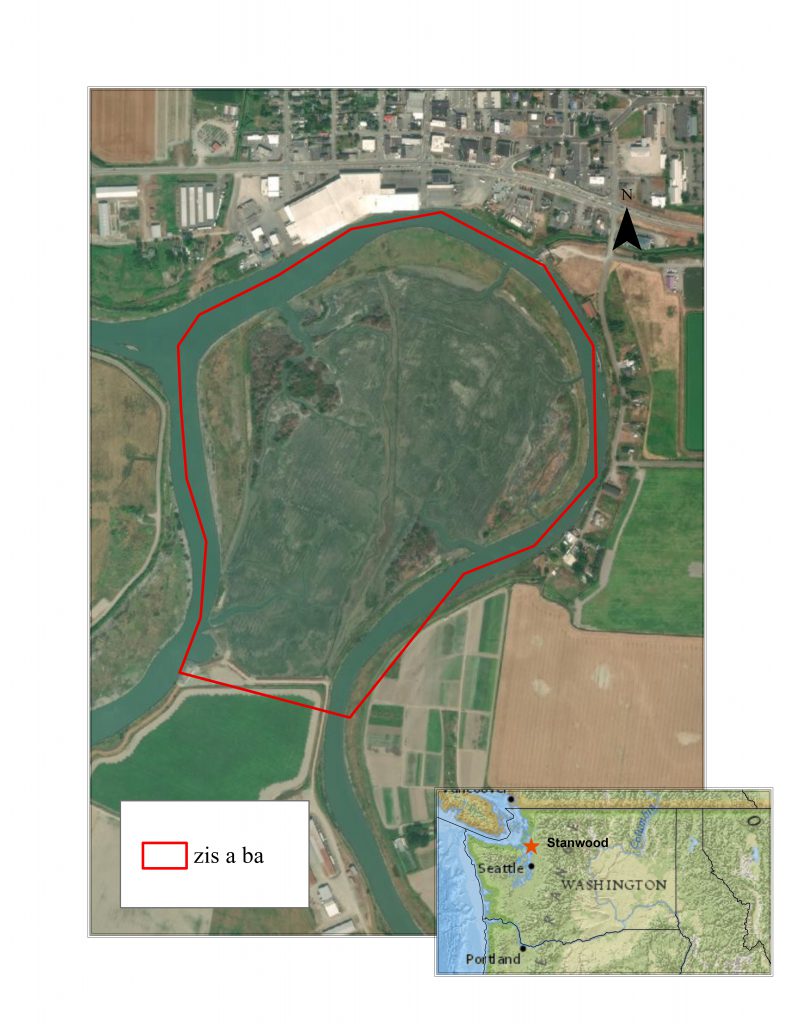Published: June 15, 2021
By Amanda Summers – Wildlife Biologist
Before colonization and European settlement, the Stillaguamish Delta was a large expanse of tidal channels and salt marsh known as estuarine wetlands (4,448 acres). This habitat is not only important to juvenile salmon, but also supports large flocks of waterfowl, shorebirds, and land birds. By 1968, 85% of the delta habitat was lost to farming and development. This loss contributes to the decline of both salmon and birds.

The Tribe’s Natural Resources Department is working to restore estuarine habitat. In 2018, almost 100-acres near Stanwood were restored at the zis a ba property. With the return of the tide, we have been monitoring the return of salmon, vegetation, and birds. While birds can choose to fl y anywhere, they do have specific needs for food, nesting, and safety. Which birds are present on site tells a story about the available habitat. A Mallard will tell you shallow marsh is present, Dunlin say mudflat, and Common Yellowthroat mean cattail or other dense marsh vegetation. This is called indicator species because the birds indicate what habitat is present based on what we know about what they need to survive. We can use changes in indicator species to help us understand how the landscape is changing.

Once zis a ba was restored and the vegetation began to transition to more salt tolerant species, the types of birds began to shift. Mallard and Northern Pintail numbers are increasing over time, while shorebird use is decreasing due to decreasing mudflats. Marsh Wrens, Common Yellowthroat and Tree Swallows are also thriving at the site.
A large number of Great Blue Herons have used zis a ba for nesting and roosting since before restoration. In 2020, the highest count was 147 herons! However, after restoration the trees they use began dying due to salt-water influence. To support their continued use, the Wildlife Program partnered with Puget Sound Bird Observatory to install heron nesting platforms. Along with the platforms, the area around the old nest trees was replanted with salt tolerant trees. The hope is that the nest platforms will provide secure nesting structure while the new trees grow large enough to support nests.

Restoration at zis a ba benefits fish and wildlife and ensures protection of treaty rights for future generations. “When we work to restore estuary, the department is working to decolonize an ecosystem. These landscapes have provided for our people since time immemorial. Colonization has been a disruption to our lifeways and this work helps to reverse that broken linkage,” says Kadi Bizyayeva, Deputy Fisheries Manager.

For more information see:
Zis a Ba Estuary Restoration
https://www.youtube.com/watch?v=owuE3RdQRnw
Stillaguamish Estuary Resorations Gives Juvenile Salmon More Places to Rear
https://nwtreatytribes.org/stillaguamish-estuary-restoration-gives-juvenile-salmon-more-places-to-rear/
Stillaguamish Tribe Aims to Prevent Heron Displacement
https://nwtreatytribes.org/stillaguamish-tribe-aims-to-prevent-heron-displacement/

